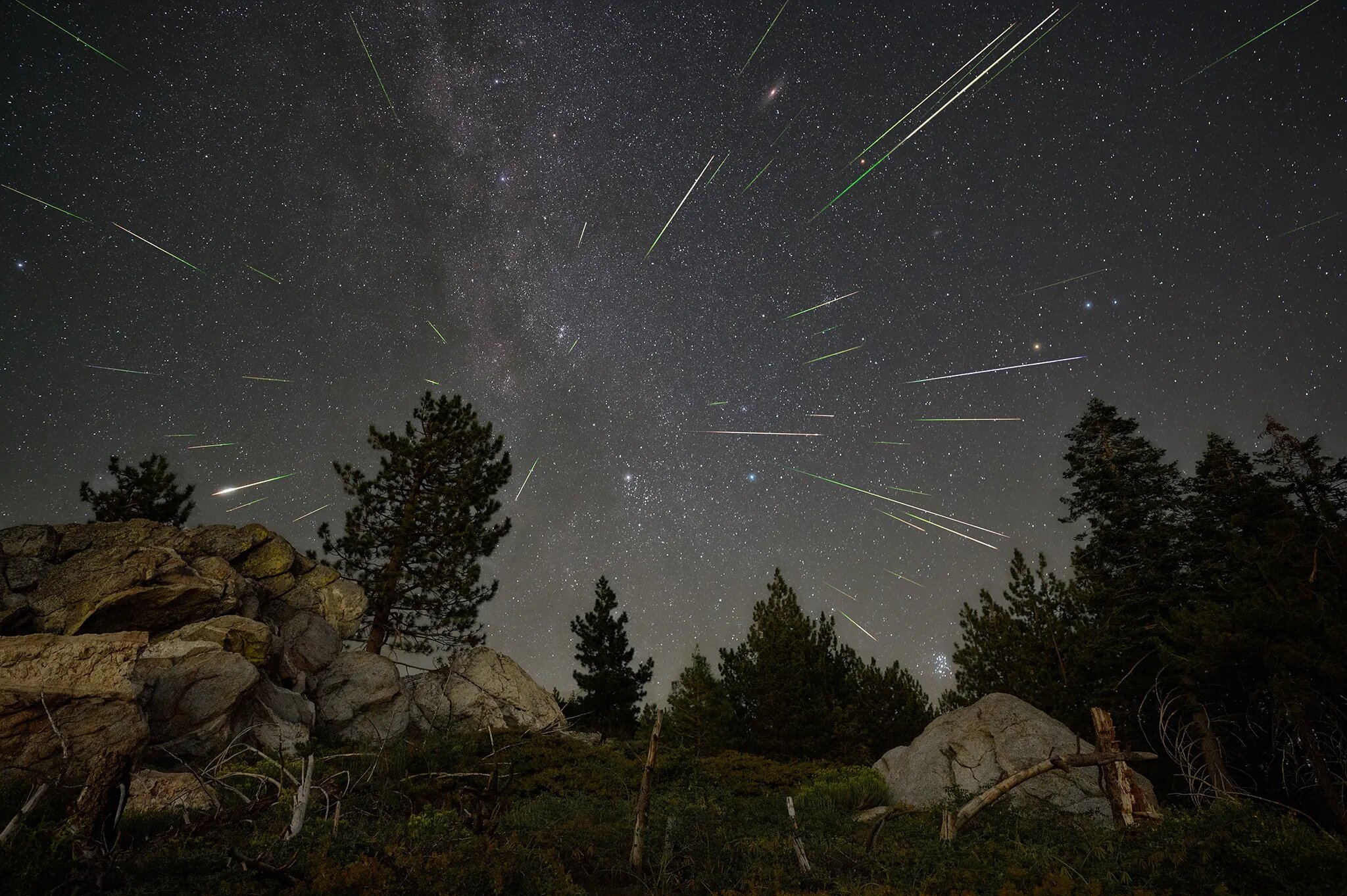Up to 100 meteors are expected at a speed of 214,365 kilometers per hour.
Qatar Calendar House (QCH) has announced the Perseid meteor shower will illuminate Qatar’s skies between Tuesday midnight and dawn after reaching its peak on Monday evening.
According to QCH, the meteors can be seen with the naked eye in the northeastern horizon of the Gulf state’s skies.
Stargazers who are interested in monitoring the meteor shower, one of the brightest of the year, are advised to do so from places that are far from light and environmental pollutants.
The annual Perseids are often active starting from mid July and peak early August. Their name is derived from the constellations of Camelopardalis and Persus.
According to CNN, up to 100 meteors are expected per hour at a speed of 214,365 kilometers per hour.
Bill Cooke, head of NASA’s Meteoroid Environment Office, told the American news network on Sunday that the Perseids are “the closest thing each year to a celestial fireworks display.” The Perseids are clearer from the Northern Hemisphere during pre dawn hours.
According to NASA, the Perseid meteor shower is “the best” time of the year, especially as it leaves behind light and colour when streaking through earth’s atmosphere.
“Perseids are also known for their fireballs. Fireballs are larger explosions of light and colour that can persist longer than an average meteor streak. This is due to the fact that fireballs originate from larger particles of cometary material,” NASA’s website states.
According to NASA, the meteors originate from “leftover comet particles” as well as broken asteroids that leave behind “a dusty trail”.
When the Earth passes through the trails, they collide with the atmosphere and break apart, creating colourful and fiery streaks in the sky.
The astronomical phenomenon was first discovered by Italian astronomer Giovanni Schiaparelli in 1865 when he discovered the source of Perseids.
Astronomy generally originated from the eighth and 15th centuries when numerous discoveries were made by Islamic astronomers that have shaped modern day knowledge.
According to the Library of Congress, Al-Farghani, known in the West as Alfraganus, first wrote the Elements of Astronomy on the Celestial Motions around the year 833. The book was widely circulated in the Islamic world and was eventually translated into Latin during the 12th century.
It then became the main source for European scholars to study Ptolemaic astronomy between the 12th and 17th century.
Astrology was also among the most significant disciplines in the Middle East during the Abbasid times in Baghdad between the eighth and tenth centuries, which built on existing sources from Greece, Iran and India.
The extensive research into astronomy led to major regional inventions, most notably the astrolabe, a device used to measure time and the movement of the sun and stars.
A Muslim, Syrian born woman named Maryam Al-Ijliya, famously known as Mariam al Astrulabi, invented the astrolabe in the 10th century after gaining experience from her father, an astrolabe maker in Baghdad.
Other prominent inventions included Ismail Al-Jazari’s three-metre ‘elephant clock.’ Built in the 1200s, the invention helped Muslims tell the time of their five daily prayers, from the break of dawn to night time.







